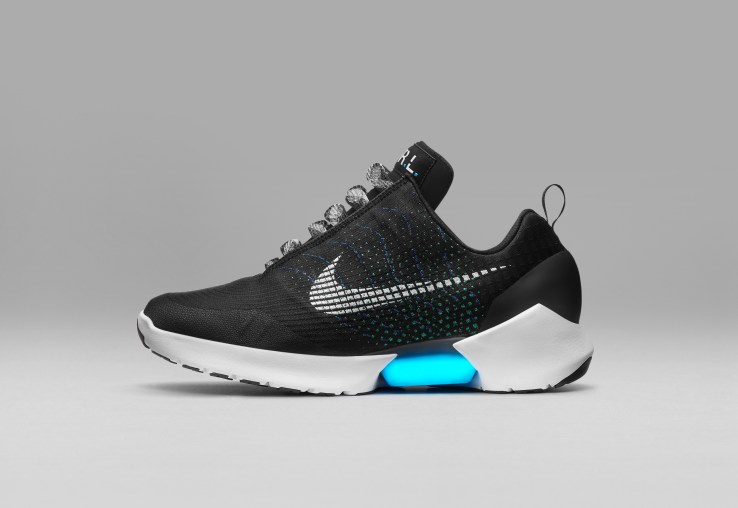It’s finally here. After teaming up with Michael J. Fox to tease us with self-lacing Nike Mags on Back To The Future day in October, Nike has finally announced a mass production shoe that will feature real-life power laces.
Meet the HyperAdapt 1.0.
 Announced today at the Nike Innovation Summit, the HyperAdapt 1.0 will be the first shoe to take advantage of Nike’s adaptive lacing (self-tying) technology, which the company is touting as an entire new platform for sneakers.
Announced today at the Nike Innovation Summit, the HyperAdapt 1.0 will be the first shoe to take advantage of Nike’s adaptive lacing (self-tying) technology, which the company is touting as an entire new platform for sneakers.This means that one day your Jordan’s, Air Max’s, and FlyKnit shoes could all be built on top of Nike’s adaptive lacing platform.
But before we get ahead of ourselves, lets take a closer look at how the shoe will actually work.
In the launch announcement, Nike touted the self-tying shoes as a way to reduce a typical athlete concern, distraction.
So, to save wearers time, the shoes will automatically tighten as soon as you step into the shoe.
“Your heel will hit a sensor and the system will automatically tighten,” explains Tiffany Beers, the project’s technical lead. “Then there are two buttons on the side to tighten and loosen. You can adjust it until it’s perfect.”
The shoes will launch during the 2016 holiday season, in three colors. Pricing hasn’t been announced yet, but the company said that it will only be available for sale to members of Nike+, their new all-in-one product and events app.
Comments
Post a Comment